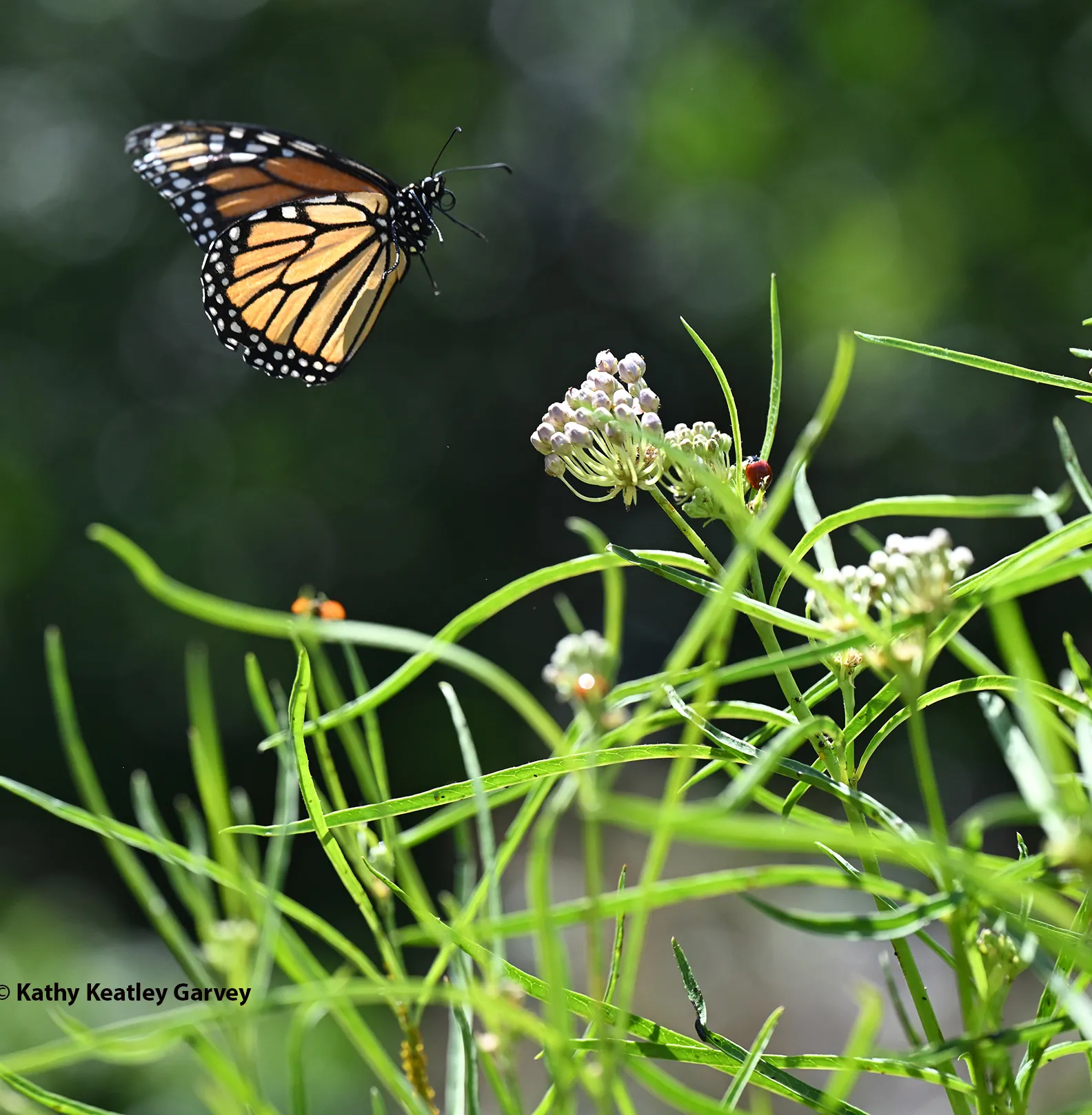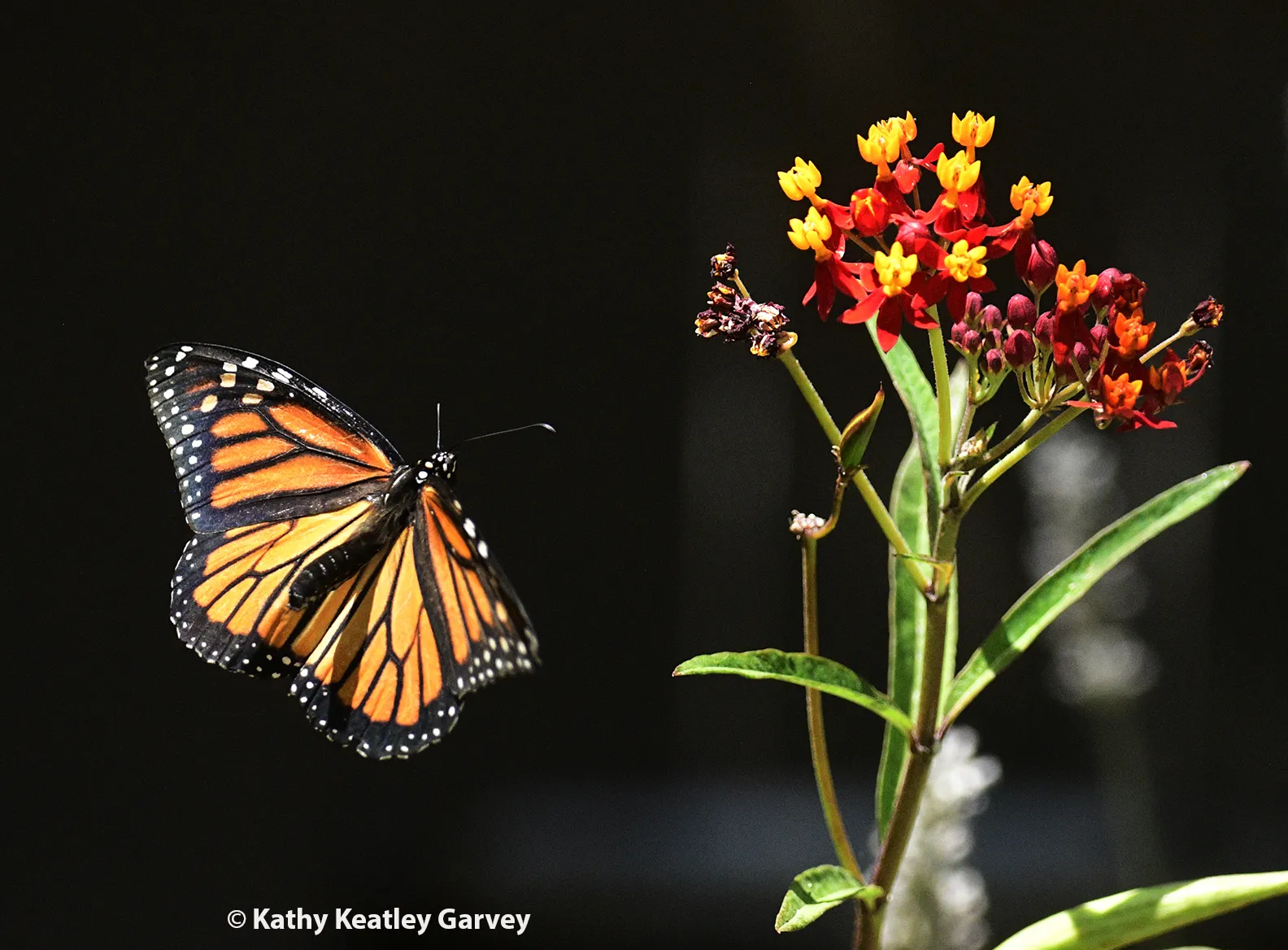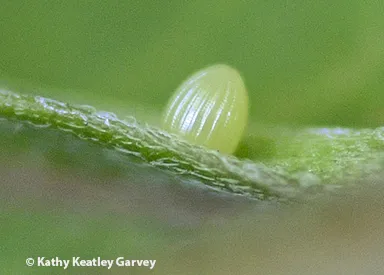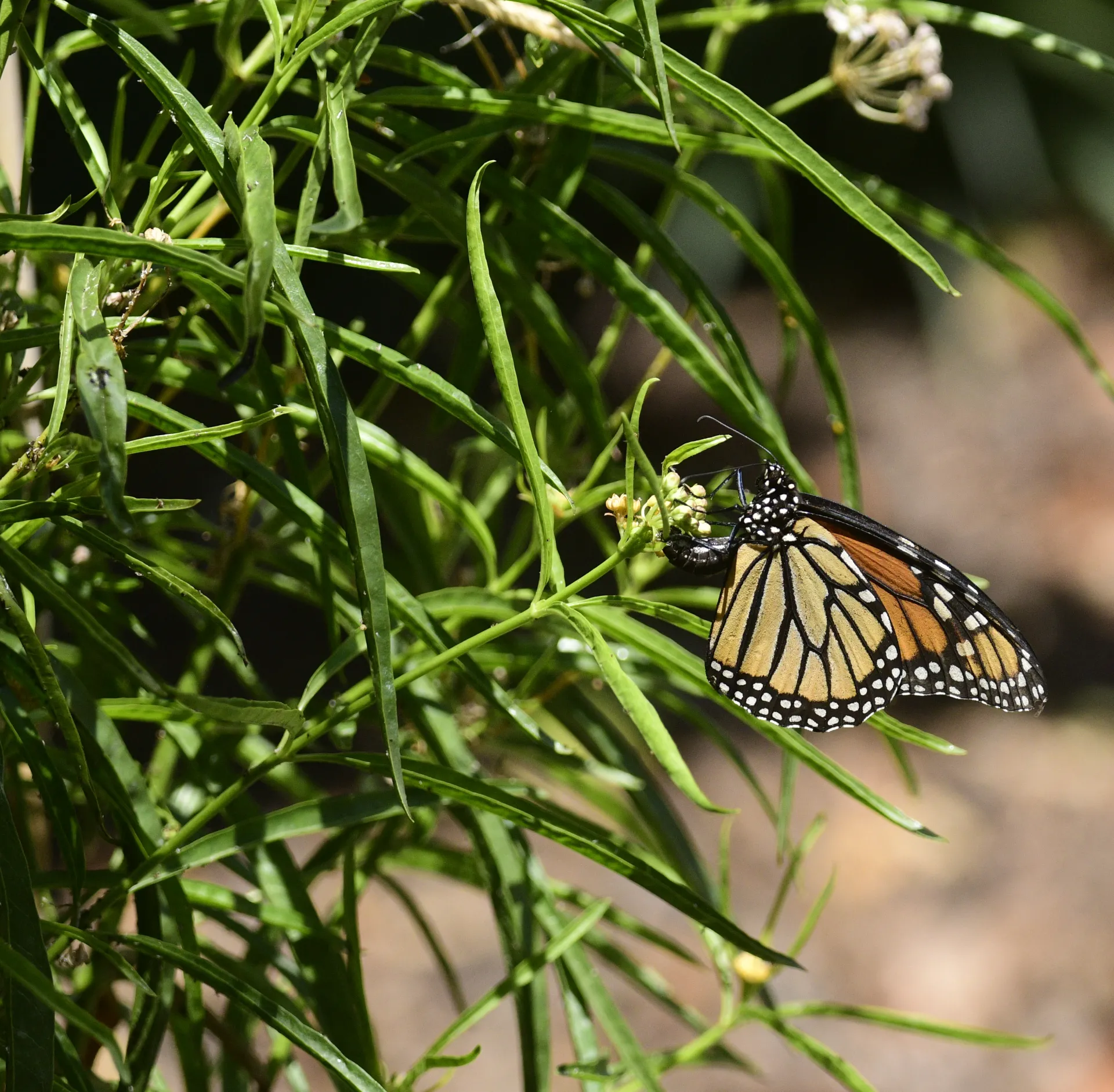
Strike up the band!
We greeted the first monarch of the year in our Vacaville pollinator garden today. The female arrived at 12: 45 p. m. and laid eggs on five milkweed plants. She sipped a little nectar. A male Gulf Fritillary chased her, a spider eyed her, lady beetles ignored her, and the cat that guards the garden tried to bat her down. The cat did not succeed. The monarch fluttered away after a 45-minute stay.
Over all, monarchs seem to be particularly scarce in Solano and Yolo counties this year. UC Davis Distinguished Professor Emeritus Art Shapiro, who has monitored the butterfly populations of central and northern California since 1972 and maintains a research website, has spotted only 20 this year. "No larvae," he said. "Just adults."

We usually see them several weeks earlier.

This past winter volunteers from the Xerces Society for Conservation counted only 9,119 ovesrwintering western monarchs in California, the second-lowest recorded since the first count began in 1997. We remember the years when they counted 200,000.
"The western migration is in trouble," Xerces says on its website. "In recent years, the number of monarchs making the annual journey to coastal California has declined by approximately 95%. In response to this, the Xerces Society has spearheaded the Western Monarch Call to Action, working in partnership with universities, government agencies, other organizations, and communities to stabilize and recover this imperiled population."
The overwintering butterflies leave their California coastal overwintering sites in February and head inward, and then off to Arizona, Nevada, Oregon, Washington, Idaho, and Utah. Some head to Canada.
We are fortunate to welcome one. We provide milkweed and nectar-rich flowers, such as Mexican sunflower, Tithonia rotundifola. With any luck, some will stop for flight fuel this fall on their way to their overwintering sites.

Welcome, Madam Butterfly.

